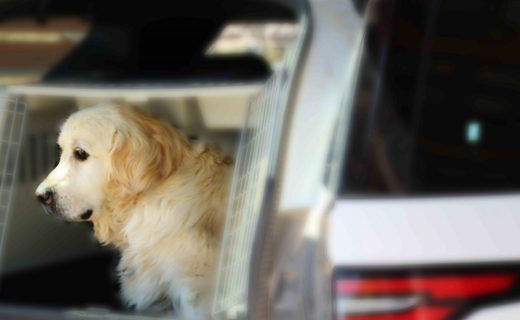Others
Pets and traveling
Equipo CAR · 12/08/2022

Pet ownership is a growing trend, especially since 2019. It is estimated that in Europe, 46% of the population has at least one pet at home. In Spain there are more than 29 million registered pets, and now that we are in the holiday season, those of you who like to travel with them should take into account certain considerations to avoid accidents and mishaps.
More than half of drivers suffer risky situations due to animals not being properly restrained in the vehicle; 1 in 5 carry their pet without any protection system; 50% are unaware of the regulations governing the transport of pets.
Transporting animals in a vehicle
If you are traveling with animals in the vehicle…
…you must always carry their official health booklet, updated and stamped by a registered veterinarian. If you are moving within the European Union, pet transport is compulsory. In general, animals must be perfectly documented and identified (census plate, chip, health card and civil liability insurance and administrative license -if necessary-).
…they must be securely fastened to avoid interference with driving, and a separator must be fitted to prevent them from causing discomfort and/or distraction. Never hold the animal on a leash, as it is not a restraint system, and never hold it in your arms. Choose a suitable restraint system for your pet!
…be aware that in the event of an accident a loose dog could injure itself or other passengers in the vehicle, so it is recommended to use a restraint system (harness, carrier or partition grid) suitable for the animal. Traveling with an unrestrained animal in the passenger compartment poses a risk to the animal, passengers and even rescue teams in the event of an accident, and can result in a fine of up to €100.
Pets and traveling: a few tips
- Be careful when opening the boot or the doors of the vehicle: the animal could run out and cause an accident.
- Never (ever ever) leave an animal inside the vehicle in high temperatures.
- Stop every two hours so that the animal can relieve itself, eat, drink or walk around, just as any of us would do!
- Animals can get dizzy during the journey. If your pet is prone to motion sickness, make sure it does not drink or eat in the hours before the journey, but allow it to hydrate at stops.
- Make sure the vehicle is well ventilated.
In short: up-to-date documentation, a suitable restraint system and make sure your pet is comfortable. Enjoy the trip!
Sources: DGT, Estudio de Censos 2021 ANFAAC y Veterindustria